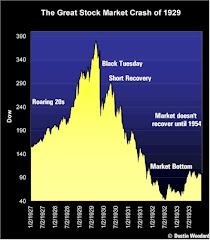In the UK a special report on pensions looking into the sustainability of public sector pensions has been released.
Lord Hutton a former Labor minister in the UK released the report that shows that the current system of public sector employees pensions is not fair to taxpayers or adequate for employees in its current form.
He is urging that profound changes be made to the system for it to be sustainable in the long-term. His point of view is that we cannot continue on as were are and major changes are required.
He is urging that profound changes be made to the system for it to be sustainable in the long-term. His point of view is that we cannot continue on as were are and major changes are required.
The UK has a pension system that is very similar to the one that Canada has for its public sector employees. It is based on the same plan design and very similar pension formulas. The report would be the star of a good road map towards changes here as well.
Hutton examined whether the current system is fair to employees and fair to taxpayers. What he discovered is that taxpayers are responsible for most of the future risk associated with these types of plans. These risk include investment; inflation; salary; and longevity risk.
There are also several gaps in fairness between what the public sector gets in pensions and what government workers get or should I say don't get.
The two major recommendations were made in the report.
· The public sector should move from a final salary pension scheme to one that is based on a career average
· The age of retirement should be the same for all taxpayers both in the private sector and the public sector.
The UK has seen a similar trend in pension coverage. In 1997 about 30% of employees had access to a DB plan with overall coverage including DC edging 50%. By 2010 those numbers had dropped dramatically with only about 10% of employees in DB plans and overall coverage about 35% including DC plans.
About 80% of the public sector in the UK has a defined benefit final salary pension plan.
The report outlined several key principles along with extensive discussion on each of the main points.
Affordable and sustainable - As employees get closer to retirement age their wages rise dramatically and the value of their pensions do as well. A greater cost falls onto taxpayers as the wage levels rise
In final salary schemes, members will have paid contributions to the scheme based on something similar to their average salary, but will receive benefits based on their final salary. Taxpayers will pick up the cost of the difference between average and final salaries and members will benefit where final salaries are higher than average salaries. This effect will be particularly visible where people have experienced rapid salary growth. In average salary schemes, members bear more of the risk – salary levels throughout a member’s career will determine their income at retirement as well as their contributions to the scheme.
Adequate and Fair - There is a big gap between those at lower pension wage level in the public sector and those at higher levels. This is unfair because high income employee receive almost twice the value of their contributions than lower income employees do.
The report points out the there are many risks associated with pensions over the long term including investment risk, inflation risk, salary risk and longevity. The current system puts most of the risk on taxpayers for future funding .
Supporting productivity:- It is interesting that the report points out the "golden handcuffs" created by defined benefit plans prevents labour mobility within the economy. It recommends that more flexibility would be better for the economy
Supporting productivity:- It is interesting that the report points out the "golden handcuffs" created by defined benefit plans prevents labour mobility within the economy. It recommends that more flexibility would be better for the economy
Transparent and simple: - The report complained that there is little transparency on the cot of PS pensions. that taxpayers have no way of estimated what the costs are associated with a PS pension.
Transparency and effective oversight of public service schemes is required for public service workers and taxpayers to have confidence in the system and improve the quality of debate about the future of public service pensions.
This report is the basis for a good formula that would make Canada's pension system fairer and more sustainable., as well.
Focusing on fairness there were many interesting observations made by Hutton.
The report points our the generational risk in the current DB plan. For example, as the real costs of DB plans become apparent the younger employees pick up more burden.
For example, the OMERS pension plan offered its members a multi-year contributions holiday. As well since the early 2000's contribution rates have doubled. The early members in the DB plan paid at the old rates but new members will be paying much higher rates for most of their careers.
The sustainability of the system was questioned. It recommended some sort of a cap on taxpayers contributions into the plans. For example in Ontario the cost of taxpayers contributions into it's biggest 3 plans has grown by 400% over the past decade. At the same time pension plan shortfalls have not diminished. OMERS is on it's way to projected $8 Billion shortfall and Ontario Teachers is still sitting on a $17 Billion shortfall.
The Commission recommends that public service employers take greater account of public service pensions when constructing remuneration packages and designing workforce strategies. to accrue further benefits in the present schemes for many decades would be unfair and inequitable to the new members coming behind them.
There is clear evidence that the administration of pension schemes can benefit from
economies of scale, particularly where existing schemes are below 100,000 members.
This bodes well for the creation of Canada's new PRPP. The report shows that the costs of administering a plan can drop to one-quarter the costs when comparing administration costs at small plans and large plans
One of the complaints that Hutton has was that during his investigation he found that there are big gaps in transparency and a lot more needs to be know about public sector pension plans. In this way both the employees and taxpayers can have confidence in the system.
There should be a fairer sharing of risk between government (and ultimately
taxpayers) and scheme members.
In a recent OMERS report they highlighted the value of a employee pension.
A member who retires at age 60 with 32 years of service and “best five” salary of $48,000. Total contribution of $50,000 was matched by employer. Total payment to member and surviving spouse, including inflation, is $960,000
Part of the report included benchmarking the UK against other systems in the world. The BBC summarized a few of these plans and they provide an interesting analysis.
Public pension schemes elsewhere
- · France: Public sector workers typically retire before 60, but there are plans to bring them in line with the private sector, who by 2012 will need 41 years of contributions with benefits based on the best 25 years' salary. There are also plans to raise the retirement age from 60 to 62.
- · Sweden: Payments are based on earnings across the career not just the final salary, with an automatic link between benefits and life expectancy.
- · Netherlands: Private and public sector schemes are similar, each with defined benefits. Dutch typically pay 1.75%-2% of earnings for each year of contributions.
- · Chile: Mandatory defined-contributions in public and private sectors. Employees pay 10% of their earnings, with top-up benefits for the poorest 60% of pensioners.
- · Greece: Retirement age raised from 60 to 65, and minimum contributory period on full benefit up from 37 years to 40 by 2015.
Bill Tufts
Fair Pensions For All




No comments:
Post a Comment